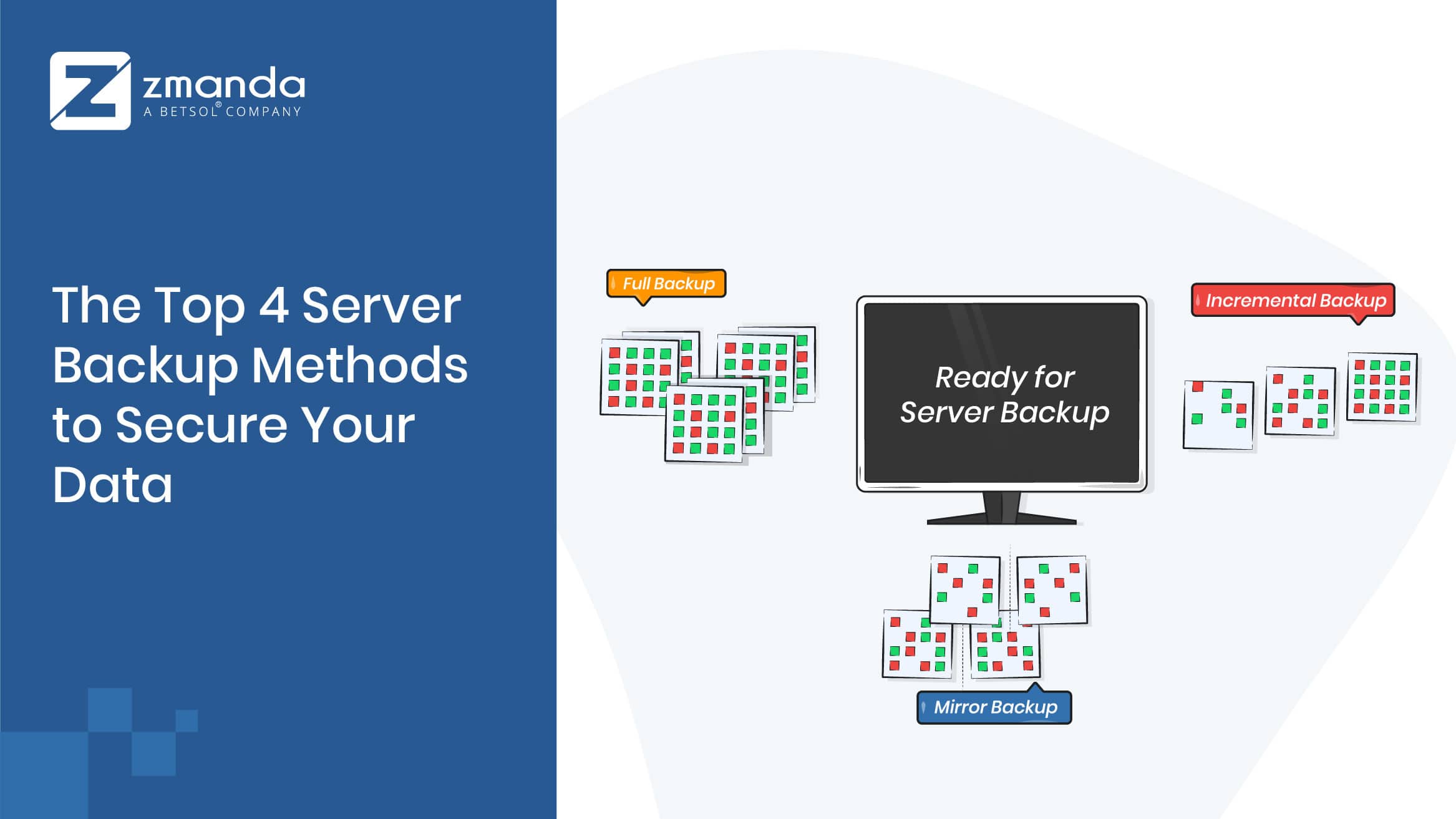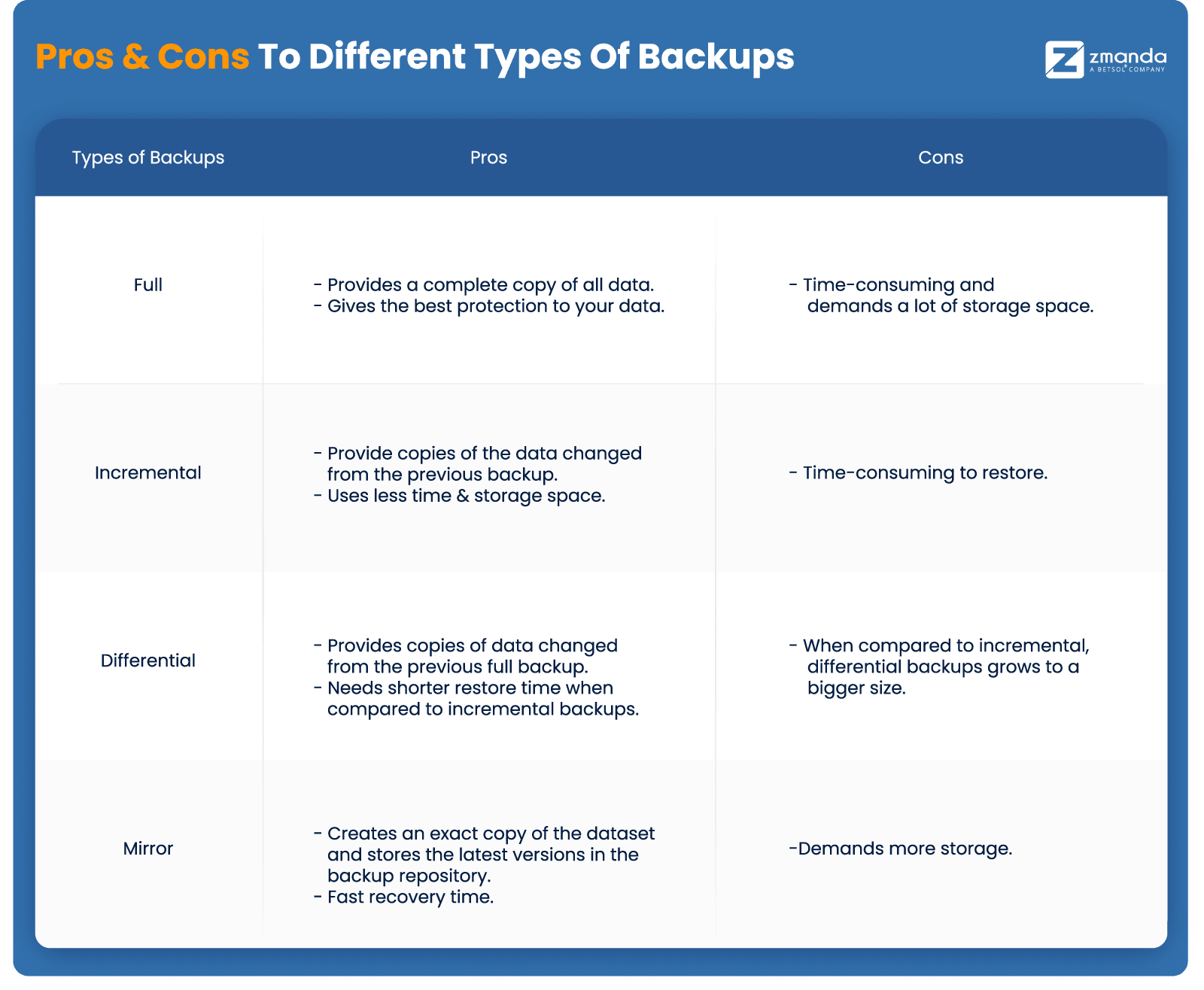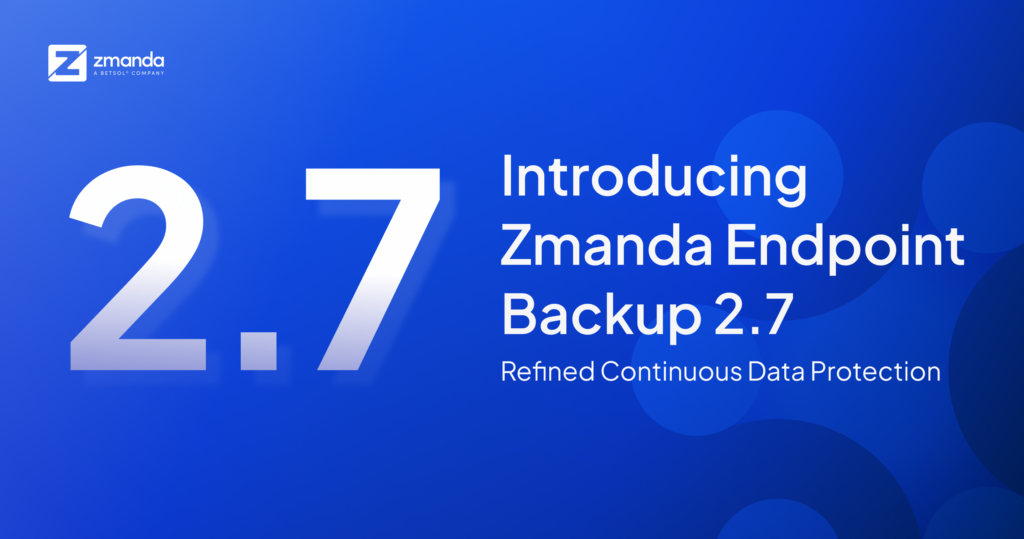
Why backup a server? Server form the core of any technology infrastructure. So, it's important to have a backup of your server data and point-in-time recovery.
Protecting data against loss, disasters (human-caused or natural) and corruption, is one of the top priorities for IT organizations. Ideas are, but implementing an efficient and effective set of backup operations can be difficult. Enterprise backup software lessens the complexity of performing backup and recovery operations. Data backup is only one part of a disaster recovery plan. It may not deliver the level of data and disaster recovery capabilities desired without careful design and testing.
Different Types of Server Backup
There are several types of backup, but how to choose the best way to safeguard your data and recover appropriately during an incident. Full backup, incremental backup, and differential backup are the most common types of backups. Other backup types are synthetic full backups and mirroring.
When we debate over cloud backup vs. local backup, some types of backup are better in certain locations. For instance, if you are performing cloud backup, incremental backups are generally a better fit as they consume fewer resources. Also, you might start with a full backup in the cloud and then shift to incremental backups. Mirror backup is typically more of an on-premises approach that involves disks.

Best Way to Backup Server Data:
1. Full Backups
A full backup is a comprehensive type of backup operation. This backup makes a copy of all data to another set of media, such as a disk or tape. Performing a full backup during every operation ensures a complete copy of all data available with a single set of media. This results in minimal time to restore data, a metric is known as a recovery time objective. However, the cons are that it takes longer to perform a full backup and it requires more storage space.
Thus, full backups are chosen to run only periodically. Data centers that have a small amount of data may opt to run a full backup daily. Usually, backup operations employ a full backup combined with either incremental or differential backups.
2. Incremental Backups
An incremental backup operation copies the data that has changed since the last backup operation of any type. An organization normally uses the modified time stamp on files and compares it to the time stamp of the last backup. Data backup applications track and record the date and time during backup operations to track files modified since these operations.
As incremental backup copies data since the last backup of any type, an organization may run it as often as desired, while storing the most recent changes. Also, incremental backup copies a smaller amount of data than a full backup. Thus, these operations will complete faster and require fewer media to store the backup.
3. Differential Backups
Initially, performing a differential backup operation looks similar to an incremental, as it copies all the changing data from the previous backup. However, each time it runs, it continues to copy all changing data since the previous full backup. Thus, it will store more data than an incremental on subsequent operations, although far less than a full backup. Moreover, differential backups require more space and time when compared to incremental backups, but less than full backups.
Performing a full backup weekly, along with running incremental backups daily, will deliver the shortest backup time during weekdays using less storage space. However, the copies of data available are a few, and restore time is the longest. If the organization needs to backup data from Wednesday, then they require the Sunday full backup, plus the Monday, Tuesday, and Wednesday incremental media sets. This will result in a dramatic increase in recovery times and requires that each media set work properly. One backup set failure can impact the entire restoration.
Running a weekly full backup plus daily differential backups will deliver results in between the other alternatives. Specifically, more backup media sets are required to restore than with a daily full policy, although less with a daily incremental policy. Also, the restore time is less than using daily incremental backups and more than daily full backups. To restore data from a particular day, you require at most two media sets. This will result in less time needed to recover and the potential for problems with an unreadable backup set.
4. Mirror Backups
A mirror backup and a full backup are the same. This backup type creates an exact copy of the source data set, and stores the latest data version in the backup repository with no track of different versions of the files. In short, the backup is a mirror of the source data, as all the different backed up files are stored separately.
One of the benefits of mirror backup is fast recovery time. It is also easy to access individual backed up files. One of the main drawbacks is the amount of storage space it demands. With that extra storage, organizations should be cautious of cost increases and maintenance needs. Also, during a problem in the source data set, such as corruption or deletion, the mirror backup experiences the same.
As a result, it's better to rely on mirror backups for all your data protection needs and to have other types of backup for the data. Also, you would need to follow the 3-2-1 rule of backup, which includes three copies of data on two different media, with one copy off site.
One specific kind of mirror backup, disk mirroring, is also known as RAID 1. This process replicates data to two or more disks. Disk mirroring’s quick recovery time makes it a strong option for data that needs high availability. It also helps in disaster recovery because of its immediate failover capability. Disk mirroring requires at least two physical drives. If one drive fails, an organization can use the mirror copy. While disk mirroring offers comprehensive data protection, it also requires a lot of backup storage capacity.
Server Backup - Wrap-Up!
For organizations with small data sets, runs a daily full backup to provide a high level of protection without much extra storage space costs. Larger organizations with more data or server volume choose to run a weekly full backup, combined with either daily incremental backups or differential backups. Using differentials provides a higher level of data protection with less restore time most of the time and a small increase in storage capacity. Thus, using a strategy of weekly full backups with daily differential backups is a good option for many organizations.


